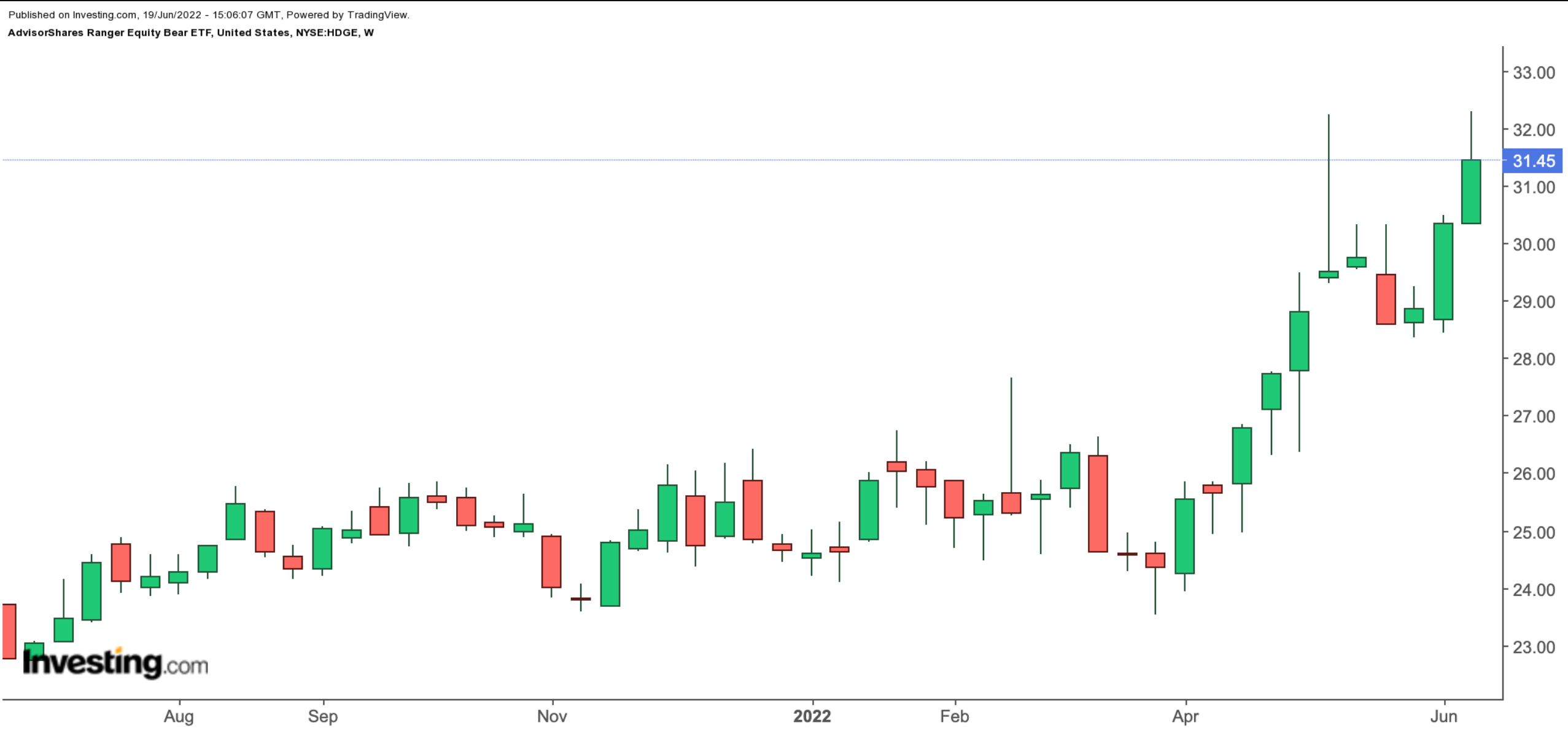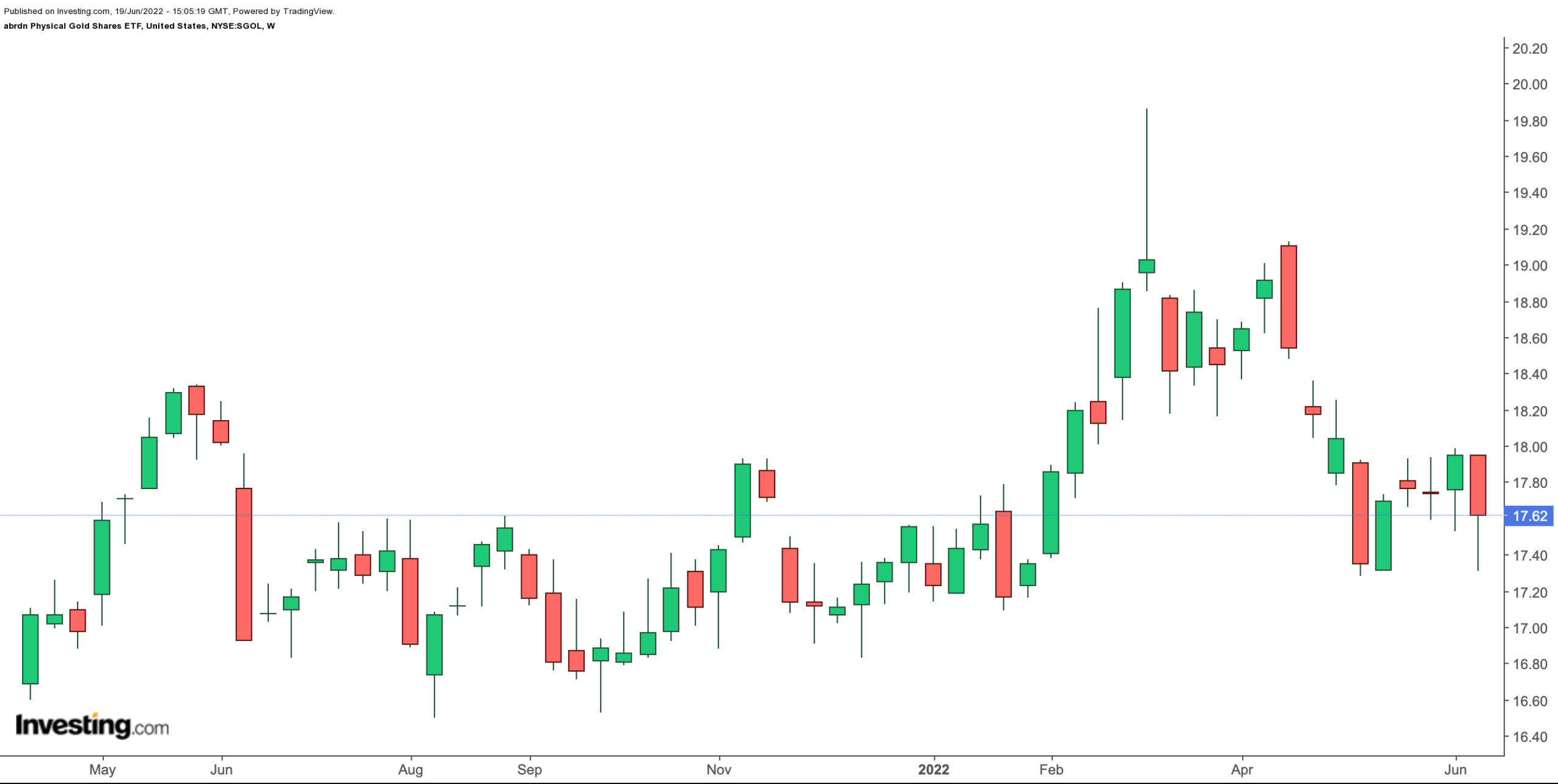BitMine stock falls after CEO change and board appointments
On Friday, June 17, Wall Street finished one of its worst trading weeks since the sharp declines seen in the early days of the COVID-19 pandemic in March 2020. Broader indices tried to recover their footing on Friday.
However, both the S&P 500 and Dow Jones Industrial Average are down over 20% from their record levels hit in January. In technical terms, a bear market signifies a decline of 20% or more from recent highs. They join the NASDAQ and Russell 2000 which, as of Friday were down 34.2% and 32.25%, respectively. In other words, following months of disconnect between lofty stock valuations and question marks about the economy, Wall Street is now in a bear market.
The Federal Reserve’s recent aggressive rate hike, along with increasing Treasury yields and worse-than-expected May retail sales, as well as housing starts data added to investor worries that the bear market may not be over soon. Numerous factors, such as interest rates, economic trends, investor sentiment, and geopolitical concerns typically create and sustain a bear market. Thus, it’s impossible to predict how long the current bear market will last.
Research by CFRA highlights:
“Of the 13 bear markets since 1946, the return to breakeven levels has varied, taking as little as three months to as long as 69 months.”
For most long-term investors, diversification may hold the key to ride out the current decline. Therefore, we introduce two exchange-traded funds (ETFs) that may help readers hedge their portfolios.
1. AdvisorShares Ranger Equity Bear ETF
Current Price: $31.45
52-week range: $22.67 -$32.29
Expense ratio: 5.20% per year
Wall Street offers numerous hedging instruments that provide some protection against declines. The first fund on today’s list is the actively managed AdvisorShares Ranger Equity Bear ETF(NYSE:HDGE). The fund sells short US-listed stocks that fund managers expect to decline in price. Put another way, unlike inverse funds, this ETF doesn't use derivative products.

HDGE was first listed in January 2011 with net assets of around $158 million. It currently has short positions in 38 stocks. In terms of sectors, these names come from information technology (31.5%), financials (17.6%), consumer discretionary (15.9 %), and industrials (10.8%).
Among those names are the credit rating agency Moody’s (NYSE:MCO); used-vehicle retailer CarMax (NYSE:KMX); Bill.com Holdings (NYSE:BILL), which offers back-office financial software; industrial software heavyweight Autodesk (NASDAQ:ADSK); and bedding products manufacturer Tempur Sealy (NYSE:TPX).
HDGE is up an impressive 27.5% year-to-date. However, we should caution that the market offers no free lunches. This specialized fund’s total expense ratio stands at a fairly substantial 5.3%.
Understandably, shorting individual stocks requires different dynamics and a professional approach. Therefore, readers who believe the successful screening process of HDGE can continue in future months should keep this fund on their radar.
2. Aberdeen Physical Gold Shares ETF
Current Price: $17.62
52-week range: $16.50-$19.86
Expense ratio: 0.17% per year
Analysts have been debating whether the powerful combination of red-hot inflation, geopolitical turmoil, and potential global economic downturn can provide tailwinds for the price of gold in the rest of the year.
Liechtenstein-based asset manager Incrementum AG expects the price of gold to hit a new record high of about $2,190 by the end of the year. Furthermore, “the long-term price target of around USD 4,800 by 2030 has been confirmed.”
Thus, our next fund may appeal to readers who regard gold as a safe haven in uncertain times. The Aberdeen Physical Gold Shares ETF (NYSE:SGOL). tracks the spot price of gold bullion.
It holds physical gold bullion bars in vaults in the UK and Switzerland.

SGOL was first listed in September 2009. As we write, the bar count is 3,587. Interested readers can find the bar list here.
The fund is up about 3.5% in the past year, but fairly flat since the start of 2022. Most financial advisors suggest a small allocation to gold for long-term portfolios and highlight it may help decrease portfolio volatility. We currently remain bullish on the precious metal and believe interested investors may find value around these levels.
